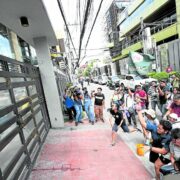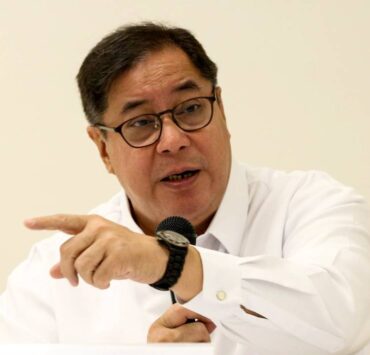Village halls in Albay’s Ligao City go solar

LIGAO CITY—For Raul Pedrajita, chair of Barangay Herrera in this city in Albay province, the newly installed solar panels in every village hall are signs that the dream of reliable electricity, especially during typhoons or whenever the power grid fails, is finally coming true.
“There were days when the barangay hall had no electricity, and people needing help had to come back the next day. It wasn’t just inconvenient, it felt like we were failing them,” Pedrajita said in an interview on Saturday.
With solar panels installed on the roof of the barangay hall in May and battery systems providing backup power, Pedrajita said their village building can operate regardless of weather conditions.
Aside from having uninterrupted power, their monthly electricity expenses have also dropped.
“From over P7,000 a month, our electricity bill went down to just P2,000. We’re saving money and giving better service. That’s a big win,” he said.
The city’s electricity is distributed by the Albay Power and Energy Corp., which also services the rest of the province’s cities of Legazpi and Tabaco and 15 towns. Pedrajita’s barangay is one of 55 villages in Ligao City now running on solar energy, thanks to a P10-million project funded by the city government.
Peace of mind
Under the program, solar panels, inverters and battery storage systems were installed in each barangay hall to address unstable power supply issues and improve the delivery of public services, especially in rural and upland areas.
“Barangay halls are the front lines of government service. Officials need to function anytime, especially during emergencies,” Ligao Mayor Fernando Gonzalez said in an interview on Friday.
“Our goal is to make electricity always available. With solar energy, we’re doing that in a sustainable way,” he added.
Tuburan Barangay Captain Wilfredo Propogo said the project has brought peace of mind to village officials and residents who do business at the barangay hall.
“Our gadgets and computers used to get damaged when the power cut out and returned suddenly—just like blinking Christmas lights. Now, we don’t worry about blackouts. Electricity is stable, and we can serve our constituents without delay,” he said.
He added: “People come here to ask for barangay clearances and certificates, it means a lot that we’re always ready to help.”
‘Model for LGUs’
According to Gonzalez, the long-term savings and environmental benefits are just as important as the immediate improvements in public service.
“We want to build climate resilience and energy independence at the grassroots,” he said. “This is not just an infrastructure project—it’s an investment in good governance.”
The city is also preparing more solar-powered initiatives, particularly irrigation systems that are already being developed to support local farmers and improve agricultural productivity.
“We’re working on irrigation projects that run on solar energy. Our farmlands need consistent water access to increase harvests and help our farmers thrive,” Gonzalez said.
Farmer Tomas Llanderal, 55, of Barangay Maonon, welcomed the initiative: “Water is just as critical as electricity. If solar can help us grow more crops, we’re all for it. It’s a smart move.”
Gonzalez said Ligao’s shift to clean energy is part of a broader commitment to disaster preparedness, environmental sustainability, and strong public service.
“We want Ligao to be a model of how LGUs (local government units) can lead in renewable energy—even in small communities,” he said.

















